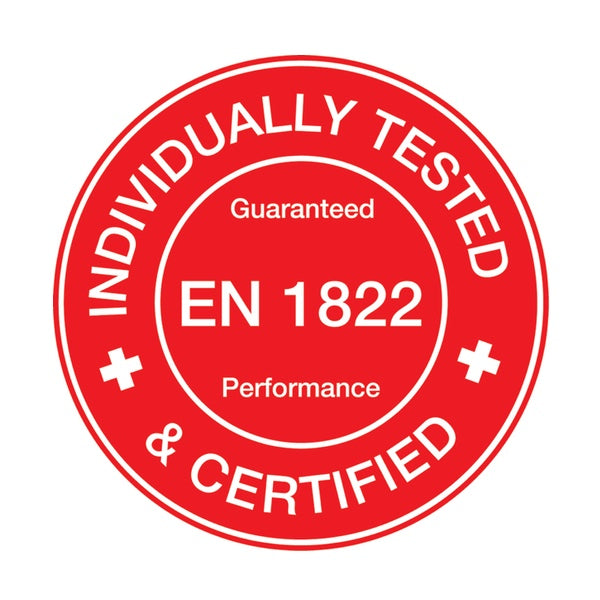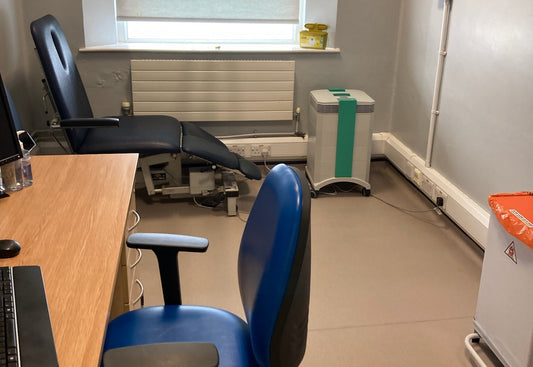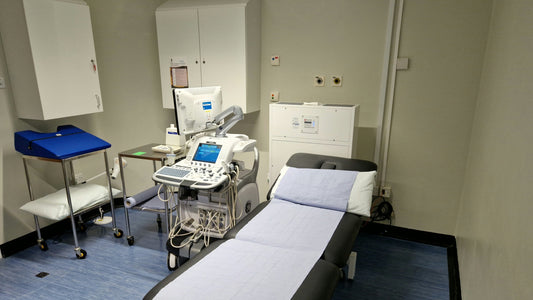Since the emergence of Covid-19 and global efforts to minimise the spread of infection throughout populations, there has been a renewed focus on determining what measures can be adopted to mitigate the risk of airborne transmission of respiratory viruses, including Covid-19, in a range of close proximity indoor settings.
Evidence shows that High Efficacy Particulate Air (HEPA) filters can act as an effective supplementary measure to remove Covid-19 particles from indoor air, however, it is important to differentiate between the range of air filtration systems on the market and which ones have sufficient efficacy to guarantee the removal of small viral particles such as Covid-19.
An essential part of determining which air purification systems uses the appropriate filters that can guarantee filtration of airborne viruses and bacteria is the European Norm 1822 (EN1822) classification. It provides a test standard to classify particle filters into different efficacy classes.
Here, we provide an overview of the EN1822 classification and its importance when considering which air filtration systems to adopt as a measure to reduce the risk of Covid-19 transmission in indoor settings.
What is the EN1822 classification?
The European Norm 1822 classification was developed in the late 1990s and is considered to be revolutionary in providing the ability to determine a system’s absolute minimum efficacy for particles, irrespective of size, including the percentage of particles it is able to remove from the air. This provides the granular level of information required to determine how well the filter in a given air filtration system can protect against airborne transmission of infection, and thus helps with the selection of which air filtration system should be adopted as effective contamination prevention measures.
The ‘EN1822 test protocol’ subsequently came into effect in 2000, also known as the most penetrating particle size (MPPS) test, which has become the world’s most stringent and robust standard for assessing air filtration efficacy.
The EN1822 classification is made up of a two-part test, including:
Part 1: Determining which particle size penetrates the HEPA filter at the highest rate;
Part 2: Testing the HEPA filter exclusively against the particle size found in part 1 to determine efficacy at different air velocities, simulating practical conditions of use at different fan speeds, given that efficacy will depend on the speed at which air passes through.
By testing the filter media in this way, efficacy information can be provided on the absolute worst-case scenario – where a filter is tested at catching particles at the most challenging size and velocity - in contrast to more historic tests, which only determine whether a filter can capture particles that are 0.3 μm or larger, which will only account for a fraction of the contamination in the air.
The tests that are done in line with the EN1822 classification is fundamentally a significantly more thorough method of determining efficacy than other tests that have historically been used and should be the gold standard classification used by manufacturers to show the effectiveness of the filters used in their air purifiers. This would provide part of the necessary assurances that systems use a filter media that is suitable for adoption as a means to tackle not only the transmission of Covid-19 but the wide range of viruses, bacteria, and other ultra-fine particulate contamination that measure below 0.3 μm.
How were filters tested before EN1822?
Before EN1822, the efficacy of air filtration systems has traditionally been assessed on performance against capturing particles 0.3 microns (μm) in size, using the Dispersed Oil Particulate (DOP) test. This test was first developed in the 1950s, at a time when the precise measurement of particles smaller than 0.3 μm was far more challenging.
As such, while the DOP test provides some information on the performance of air filtration systems in removing particles measuring 0.3 μm or larger, it cannot determine the efficacy of an air filtration system in removing particles smaller in size, such as the coronavirus SARS-COV-2, which measures between 0.25 and 1.0 μm in diameter. Nor can it determine whether the filter in an air purifier can filter the range of additional respiratory viruses and bacteria that measure smaller in size than 0.3 μm.1
With most HEPA air purifiers on the market now claiming to have a 99.97% efficacy in removing particles measuring 0.3 μm, it is vital that manufacturers further clarify whether the filter in the air filtration systems can remove smaller viruses and bacteria, many of which are more damaging to public health.
In the context of the current pandemic, it is no longer sufficient to use the DOP test to show the air filtration efficacy of a filter media.
How has the IQAir HyperHEPA filter been tested?
The IQAir HyperHEPA filter (“IQAir filter”) in a unit an air cleaner such as the IQAir Cleanroom H13 has been subject to the robust EN1822 classification tests and not only meets the standard for HEPA filters – defined as ≥ 99.97% efficacy for particles measuring 0.3 μm - but exceeds this standard.
Test reports show that the IQAir filter is effective in the worst-case scenario in capturing particles measuring 0.14 μm at two different airflow rates: 99.95% for airflow rates up to 240 m3/h (141 cubic feet per minute) and exceeding 99.5% for airflow up to 560 m3/h (330 cubic feet per minute).
As such the IQAir filter has been shown to capture even nanometer-size particles with at least 99.95% efficiency, at fan speeds 1 and 4, and 99.5% efficiency at maximum fan speed.
Conclusion
As countries around the world continue to tackle the spread of Covid-19 and determine appropriate measures to mitigate the risk of further infection, it is vital that manufacturers of air filtration systems provide clarity on the extent to which their systems can remove small particles such as coronavirus SARS-COV-2 from indoor air.
The EN1822 classification goes beyond the results from the now outdated DOP test and provides this much-needed clarity. The EN1822 classification should be considered the gold standard for determining the efficacy of filters used in air filtration systems.
Zhao B et al. Air purifiers: A supplementary measure to remove airborne SARS-CoV02. Building and Environment. June 2020. Available: https://www.ncbi.nlm.nih.gov/pmc/articles/PMC7180358/




